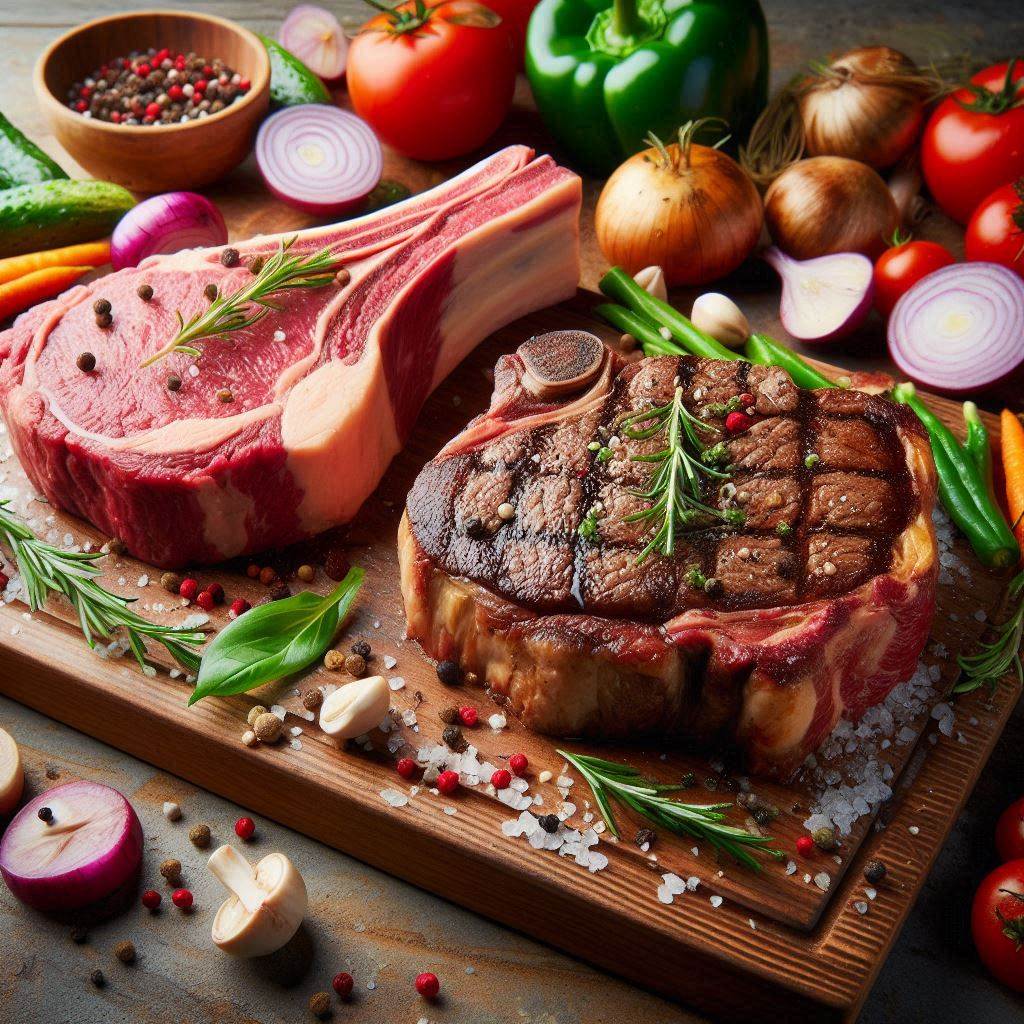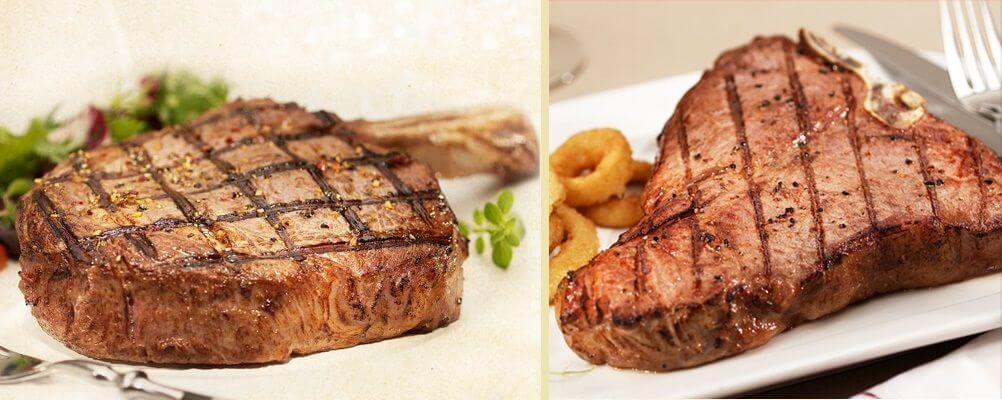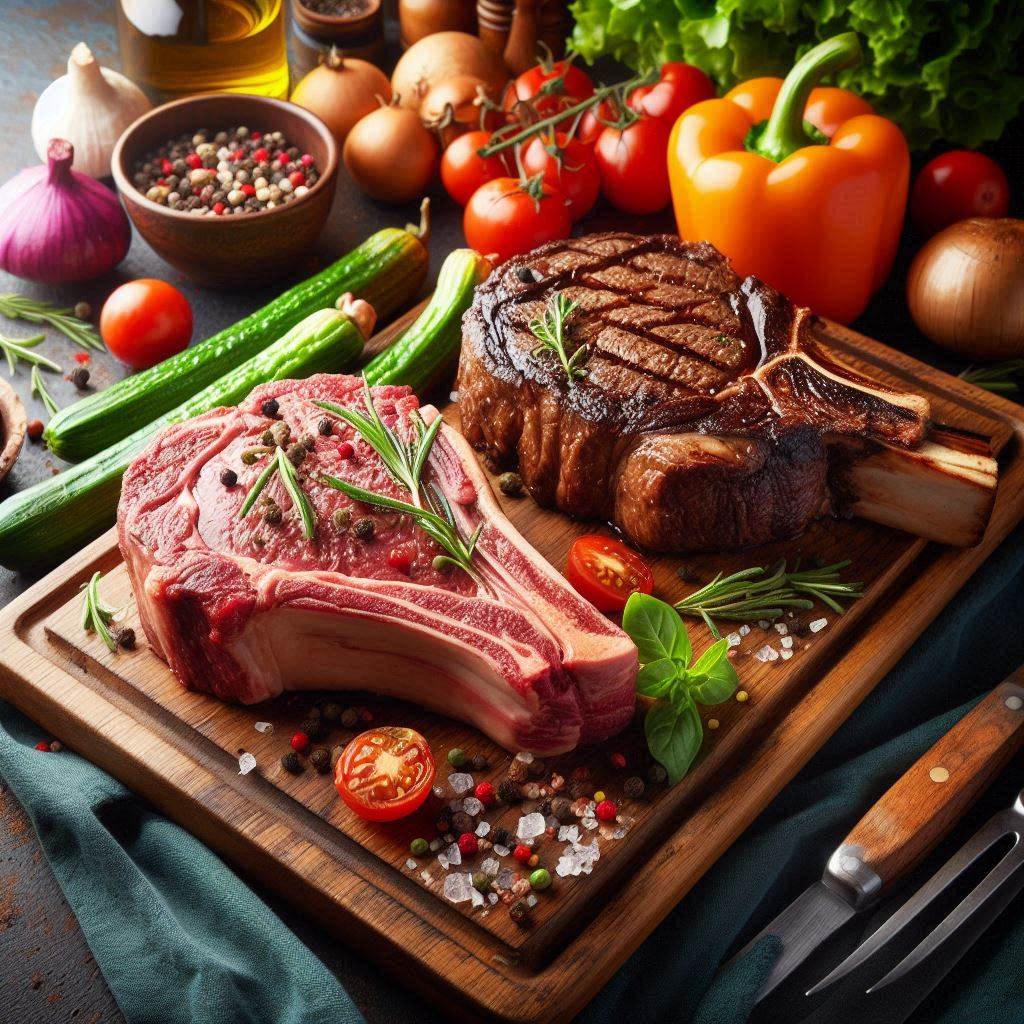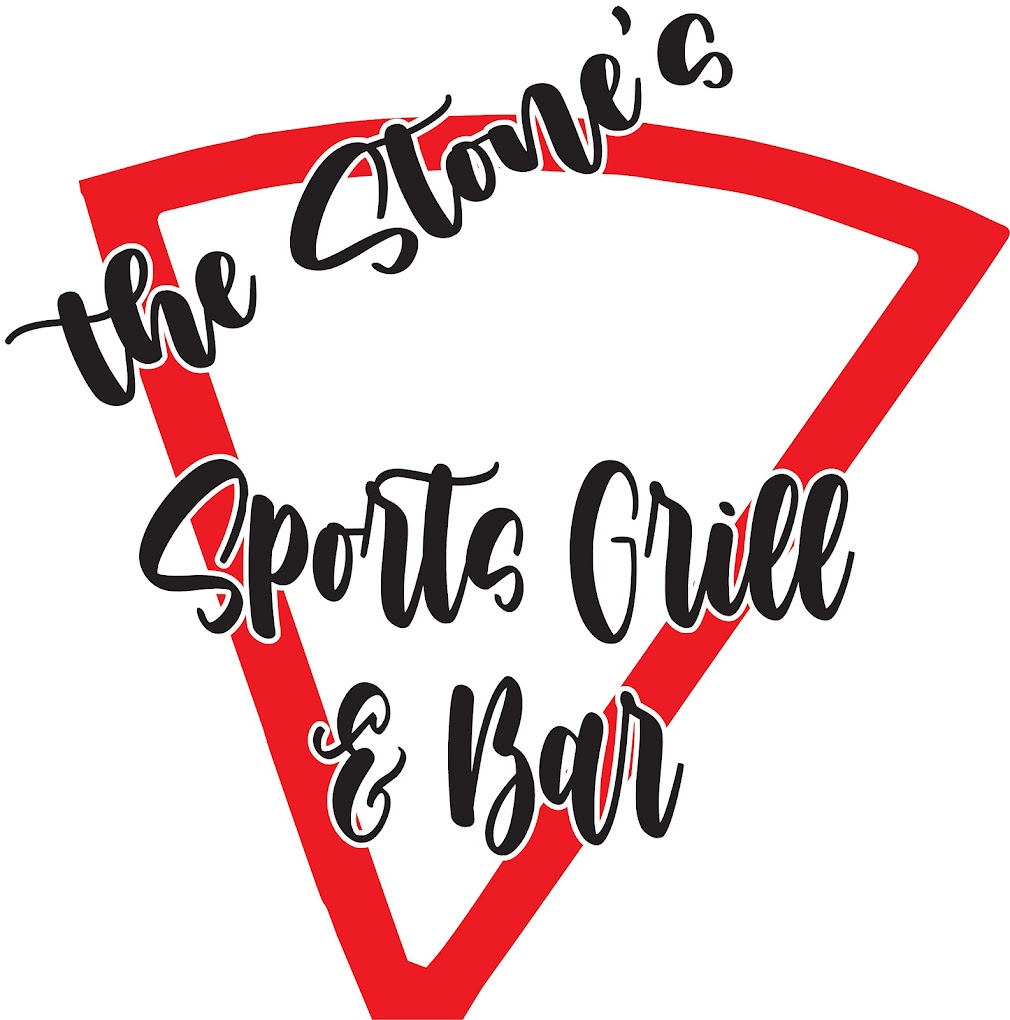Overview Of The Porterhouse And Ribeye Cuts
Porterhouse vs Ribeye are both popular cuts of steak loved by meat enthusiasts. They share some similarities but also have distinct characteristics that set them apart. Here is a brief overview of these two cuts:

Porterhouse Steak:
- A porterhouse steak comes from the rear end of the beef loin.
- It consists of two cuts, the tenderloin on one side and the strip steak on the other, separated by a T-shaped bone.
- This cut is larger and typically weighs around 24 ounces or more.
- The tenderloin part is more tender and milder in flavor, while the strip steak offers a rich and beefy taste.
- Due to its size and bone-in nature, the Porterhouse is often considered a hearty and indulgent choice.
Ribeye Steak:
- Ribeye comes from the rib section of the beef.
- It is known for its marbling, giving it a rich buttery flavor.
- This cut is typically boneless, making it easier to handle and cook.
- Ribeye is smaller than Porterhouse, usually ranging from 8 to 16 ounces.
- Thanks to the marbling, it is incredibly tender and offers a melt-in-your-mouth experience.
Flavor And Texture Comparison Porterhouse vs Ribeye
Taste And Tenderness Of Porterhouse Steak
The Porterhouse steak combines two different cuts of beef: the tenderloin and the strip. The tenderloin, also known as filet mignon, is a lean and tender cut considered one of the most tender cuts of beef. On the other hand, the strip is a flavorful cut with a rich, beefy taste.
When cooked correctly, the Porterhouse steak offers a combination of tenderness and flavor. The tenderloin side is melt-in-your-mouth tender, while the strip side provides a satisfying chew. The Porterhouse steak is often described as having a robust and meaty flavor, with hints of buttery richness from the tenderloin.
Comparing The Flavor And Texture Of Ribeye Steak
The Ribeye steak stands out for its rich marbling, which gives it its tenderness and distinctive flavor. The marbling in the meat provides a buttery and melt-in-your-mouth texture, making each bite a delight.
In terms of flavor, the Ribeye steak is known for its beefy taste, which is more prominent than other steak cuts. The marbling, which consists of small streaks and flecks of fat, contributes to the steak’s juiciness and enhances its flavor when cooked. When properly prepared, the marbling melts into the meat, producing a tender and succulent steak.
In conclusion, the Porterhouse and Ribeye steaks offer unique flavor and texture profiles. The Porterhouse excels in its combination of tenderloin tenderness and strip flavor, while the Ribeye stands out for its rich marbling and robust beefy taste. Ultimately, the choice between the two cuts comes down to personal preference.
Cooking Techniques
Best Methods To Cook Porterhouse Steak
The Porterhouse steak is best cooked using high-heat methods such as grilling or broiling. The thick cut of the steak allows for a nice sear on the outside while keeping the inside juicy and tender. Follow these steps for cooking a delicious Porterhouse steak:
- Preheat the grill or broiler to high heat.
- Season the steak with salt, pepper, and any desired spices.
- Place the steak on the grill or under the broiler and cook for 4-5 minutes per side for medium-rare doneness.
- Use a meat thermometer to ensure the internal temperature reaches 130°F for medium-rare or desired level of doneness.
- Let the steak rest for a few minutes before slicing and serving.
Recommended Cooking Techniques For Ribeye Steak
The Ribeye steak is versatile and can be cooked using various methods, including grilling, pan-searing, or broiling. Here is a simple method for cooking a flavorful Ribeye steak:
- Preheat a grill, cast iron skillet, or broiler to high heat.
- Season the steak generously with salt, pepper, and your favorite seasonings.
- If grilling, place the steak directly over the flame and cook for about 4-5 minutes per side for medium-rare.
- If pan-searing, heat a skillet over high heat and add a small amount of oil. Place the steak in the hot skillet and cook for 4-5 minutes per side.
- If broiling, place the steak on a broiler pan and cook for about 4-5 minutes per side.
- Use a meat thermometer to ensure the internal temperature reaches 130°F for medium-rare or desired level of doneness.
- Let the steak rest for a few minutes before slicing and serving.
These recommended techniques can be used to cook both Porterhouse and Ribeye steaks to perfection. Experiment with different cooking methods to find your preferred way of enjoying these delicious cuts of beef.
Serving Suggestions Porterhouse vs Ribeye
Serving Ideas For Porterhouse Steak
When it comes to serving a Porterhouse steak, simplicity is key to allowing the flavors of the meat to shine. Here are some serving ideas for your Porterhouse steak:
- Serve the steak on a large platter, sliced against the grain, to showcase its size and tenderness.
- Accompany the steak with classic steakhouse sides such as baked potatoes, creamed spinach, and a fresh green salad.
- Drizzle the steak with a simple compound butter flavored with herbs such as rosemary or thyme to add a layer of richness.
Creative Ways To Present Ribeye Steak
The Ribeye steak lends itself to creative presentation, making it a chef’s favorite. Here are some creative ways to present your Ribeye steak:
- Plate the steak alongside colorful roasted vegetables for a vibrant and delicious presentation.
- Slice the steak thinly and arrange it on a bed of arugula or mixed greens for a lighter, salad-like presentation.
- To add flavor and visual appeal, garnish the steak with a drizzle of balsamic reduction or a sprinkle of crunchy sea salt.
Remember, presentation is just as important as taste when enjoying your steak. Get creative and experiment with different serving ideas to impress your guests or elevate your dining experience.
Health Benefits
Nutritional Advantages Of Porterhouse Steak
Porterhouse steak offers several nutritional advantages, making it a healthy choice for steak lovers. Here are some key benefits of consuming Porterhouse steak:
- High protein content: Porterhouse steak provides significant protein essential for building and repairing tissues and promoting muscle growth.
- Rich in vitamins and minerals: This steak is a good source of essential vitamins and minerals, including iron, zinc, and B vitamins, which are crucial for energy production and overall health.
- Healthy fat content: While Porterhouse steak contains some fat, it also provides healthy fats like monounsaturated and polyunsaturated fats, which contribute to heart health and reduce the risk of chronic diseases.
The Health Benefits Of Consuming Ribeye Steak
Ribeye steak also offers several health benefits. Here are some reasons why consuming Ribeye can be good for you:
- Excellent source of essential nutrients: Ribeye steak is rich in vitamins, minerals, and antioxidants that contribute to overall health and well-being.
- Heart-healthy fats: Ribeye steak contains monounsaturated fats that, when consumed as part of a balanced diet, can help protect against heart disease.
- Promotes healthy muscle function: Ribeye steak’s high protein content supports muscle growth and repair, making it an excellent choice for athletes and individuals looking to build strength.
It’s important to note that moderation and balance are key when enjoying any steak. Incorporating various nutrient-dense foods and maintaining a healthy lifestyle are essential for optimal health.

Popular Opinions
Expert Opinions On Porterhouse Vs. Ribeye Debate
Experts have varying opinions on the Porterhouse vs. Ribeye debate.
Some argue that the Porterhouse is superior due to its tenderness and mild flavor. They believe the combination of the strip and tenderloin portions in the Porterhouse makes it the ultimate steak experience.
On the other hand, some experts praise the intense flavor and juiciness of Ribeye. They argue that the marbling creates a melt-in-your-mouth texture and enhances the overall taste.
Steak Lovers’ Preferences And Experiences
Steak lovers have their preferences when choosing between the Porterhouse and Ribeye.
Some enjoy the leaner and more tender bite of the Porterhouse, appreciating its versatility for various cooking methods.
Others savor the Ribeye’s bold and rich flavors, believing that the marbling adds an unmatched depth of taste.
Many steak enthusiasts have tried both cuts and have had memorable dining experiences with each. The choice between the Porterhouse and Ribeye often comes down to the specific occasion, personal taste preferences, and desired level of indulgence. Both cuts offer exceptional quality and will satisfy any steak lover’s cravings.
Conclusion
Porterhouse steak combines tenderloin and strip steak in one cut, while Ribeye steak has a rich, buttery flavor throughout the meat. The Porterhouse steak contains a larger section of tenderloin, a leaner cut with a milder flavor, compared to the Ribeye’s fattier and more robust flavor. Both cuts of steak are loved by many and offer exceptional quality and taste.
Factors To Consider When Choosing Between The Two Cuts
- Personal taste preference: Consider whether you prefer a leaner and milder flavor (Porterhouse) or a fattier and more robust flavor (Ribeye).
- Cooking and serving methods: Consider how you plan to prepare and serve the steak, as different cuts may work better for grilling, pan-searing, or other methods.
- Occasion and desired indulgence level: Both cuts offer a luxurious steak experience, so consider the specific occasion and how indulgent you want the dining experience to be.
Ultimately, the choice between Porterhouse and Ribeye steak comes down to personal preference and the specific qualities that each value in a steak. Consider your taste preferences, desired cooking method, and occasion, and enjoy the exceptional flavors offered by both cuts of steak.
References:
- https://www.cozymeal.com/magazine/porterhouse-vs-ribeye
- https://www.mychicagosteak.com/steak-university/porterhouse-ribeye-great-steak-debate
FAQ about Porterhouse vs Ribeye: Steak Showdown
Q: What is a Porterhouse steak?
A: A Porterhouse steak is harvested from the loin or “short loin” of the cow.
Q: How does a ribeye differ from a Porterhouse steak?
A: Ribeye comes from the cow’s ribs, whereas Porterhouse comes from the short loin further down the torso. Both cuts are tender and juicy because they come from low-exercise portions of the cow.
Q: What are the major differences between Porterhouse and Ribeye?
A: One significant difference between Porterhouse and Ribeye is their size.
Q: Which part of the cow does a Porterhouse steak originate from?
A: A Porterhouse steak is harvested from the loin or “short loin” of the cow.
Q: Why are Porterhouse and Ribeye considered tender and juicy cuts of steak?
A: Both cuts come from low-exercise portions of the cow, contributing to their tenderness and juiciness.

The Stone’s Sports Grill and Bar was Established on December 1, 2021. The Stone is a Sequel to another restaurant called Cornerstone’s First Edition in Tucumcari, NM. This particular venue is located on the Southeast side of Colorado Springs. The Stone is Wide Open. We have a large dance floor, multi-level stage, pool room, (5) dart boards, and a bar with a large selection of wine spirits and brews.